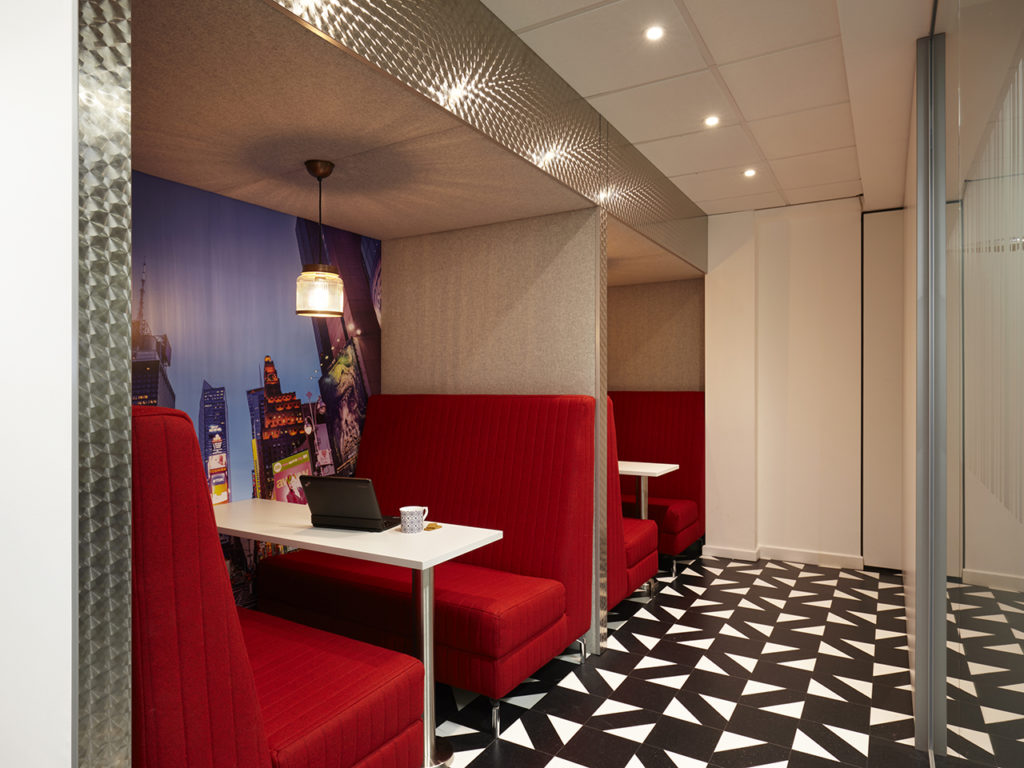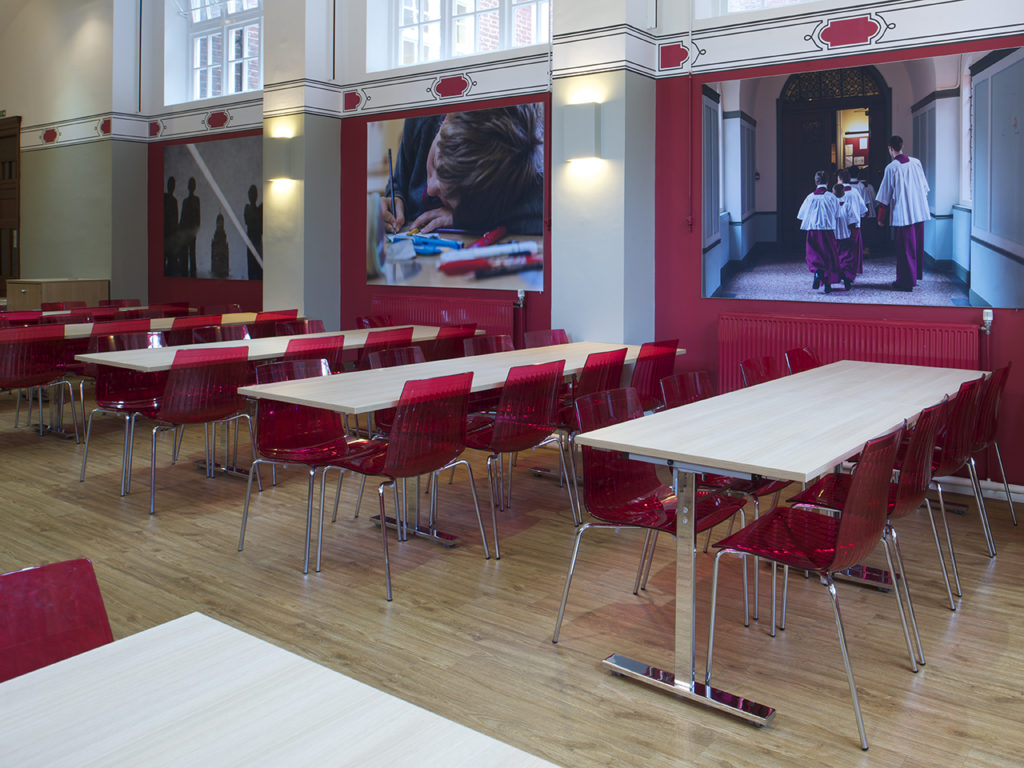
Dining spaces are subject to a lot of excess sound. A number of ongoing conversations causes an increase of noise, to which students often respond to by speaking louder to be physically heard by their group of friends. Due to eating spaces requiring easy-clean finishes, walls and floors are often hard, which further increases sound reverberation.
The average noise level in a school dining hall is between 45 and 60 decibels, which is the equivalent of normal piano playing (without the musical properties) To ensure that noise in your dining space doesn’t reach unhealthy levels, there are a number of different options that you can implement:
Acoustic wall coverings. These can range from a cost-effective Hush-tex panel, or to a fully branded wall covering. You can double up display space with acoustic panelling to add colour and branding to your dining space.

Choose a more sound-absorbent floor covering. Whilst wood is an aesthetically pleasing flooring option, choosing something like a cushioned wood-effect vinyl flooring will help you to manage reverberation.
Add textured, perforated or organically shaped objects to help break up and absorb the sound waves and cut out reverberation.
Implement ceiling fins or rafts to further absorb excess noise.
Avoid vaulted ceilings or curved walls as these will amplify sound. If you are located in a listed building with vaulted ceilings, then you can install acoustic floating panels to break up the sound waves.




